
William Hyde Wollaston was an English chemist and physicist who is famous for discovering the chemical elements palladium and rhodium. He also developed a way to process platinum ore into malleable ingots.

The Wollaston Medal is a scientific award for geology, the highest award granted by the Geological Society of London.
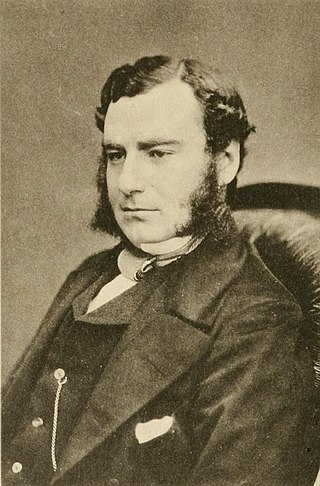
Alfred Newton FRS HFRSE was an English zoologist and ornithologist. Newton was Professor of Comparative Anatomy at Cambridge University from 1866 to 1907. Among his numerous publications were a four-volume Dictionary of Birds (1893–6), entries on ornithology in the Encyclopædia Britannica while also an editor of the journal Ibis from 1865 to 1870. In 1900 he was awarded the Royal Medal of the Royal Society and the Gold Medal of the Linnaean Society. He founded the British Ornithologists Union.

Captain Frederick Wollaston Hutton was an English-born New Zealand scientist who applied the theory of natural selection to explain the origins and nature of the natural history of New Zealand. Whilst an army officer, he embarked on an academic career in geology and biology, to become one of the most able and prolific nineteenth century naturalists of New Zealand.

East Bunbury is an inner southeastern suburb of Bunbury, Western Australia 4 kilometres (2.5 mi) from the centre of Bunbury. It is located within the local government area of the City of Bunbury.

Bembidion is the largest genus of beetles in the family Carabidae by number of species. All species are small and move very fast. Most of them live close to water. The genus has a biantitropical distribution, meaning they are found in both the Northern and Southern Hemispheres, but not in the tropics. In warmer regions it is substituted by closely related Tachys and other genera.

Cymindis is a genus of ground beetle native to the Palearctic, the Near East, and North Africa. It contains the following species:
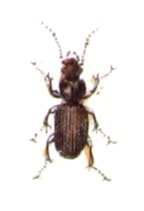
Olisthopus is a genus of ground beetle native to the Palearctic, the Near East and North Africa. It contains the following species:
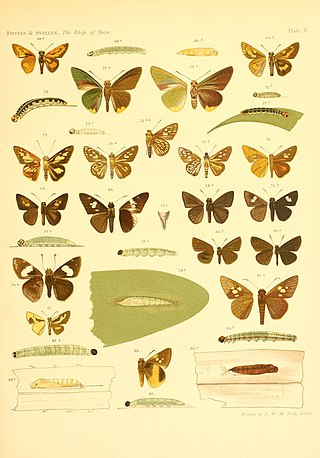
Astictopterus is a genus of grass skippers in the family Hesperiidae. There are two species groups, one Afrotropical, the other Indomalayan.

Syntomus is a genus in the beetle family Carabidae. There are at least 50 described species in Syntomus.
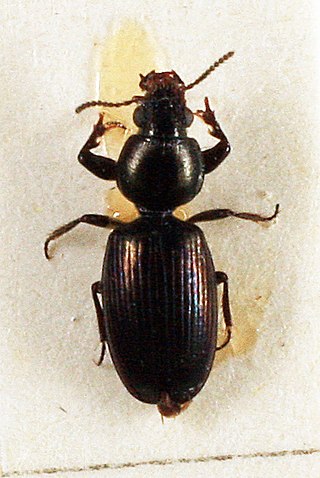
Dyschirius is a genus of beetles in the family Carabidae:
Dyschirius pauxillus is a species of ground beetle in the subfamily Scaritinae. It was described by Thomas Vernon Wollaston in 1864.
Dyschirius auriculatus is a species of ground beetle in the subfamily Scaritinae. It was described by Thomas Vernon Wollaston in 1867.
Dyschirius cariniceps is a species of ground beetle in the subfamily Scaritinae. It was described by Baudi di Selve in 1864.
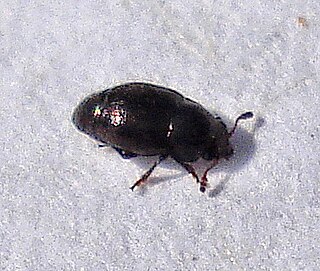
Brachypterus is a genus of short-winged flower beetles in the family Kateretidae. There are about 18 described species in Brachypterus.

Laparocerus is a genus of weevils of the family Curculionidae with 264 species and subspecies practically exclusive to central Macaronesia: the archipelagos of Madeira, Salvages and the Canaries. The two species present in western Morocco are attributable to a retro-colonisation from the Canary Islands to Africa. Over some nine million years, this lineage of Entiminae has generated some twenty-four monophyletic branches (subgenera) as a result of successive adaptive and geographic radiations, which have been significantly influenced by the geological dynamics of construction and dismantling typical of volcanic islands.












